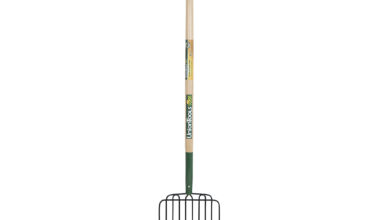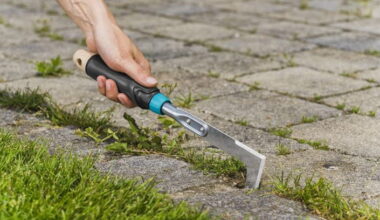Here’s a tussle we bet you didn’t expect to get caught up in – the age-old squabble: anvil pruner vs bypass pruners. In our corner of the world, this is nothing short of a duel! These two types of pruning devices have been vying for supremacy in gardening circles as long as anyone can remember.
Anvil pruners, those robust warriors, are known for their strength and sturdy build. Ideal for chopping through deadwood without batting an eyelash. On the flip side of this coin dwells the bypass pruner – swift, precise, leaving clean cuts on live plants like a hot knife slicing through butter.
I’m not just here to rattle off facts about these horticultural gladiators; I aim to delve beneath their steely exteriors. Prepare yourselves: we’re diving headfirst into the pros, cons, and some recommendations about both types of pruning shears.
Cutting Mechanism of Anvil Pruners
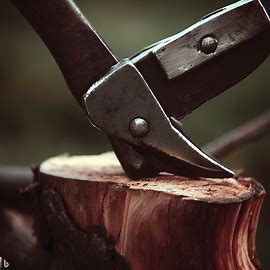
When it comes to pruning tools, anvil pruners have a unique cutting mechanism. They consist of a sharp blade that closes onto a flat surface, known as the anvil.
This design allows for maximum force and power during cuts, making them ideal for thick branches and tough woody stems.
Anvil pruners work by squeezing the branch or stem between the blade and the anvil, resulting in a clean cut.
The pressure exerted on the plant material helps prevent crushing or tearing while providing a precise and efficient cut.
However, it’s important to note that due to their cutting mechanism, anvil pruners can leave behind larger wounds compared to bypass pruners. This could potentially lead to slower healing times or increased risk of disease transmission if proper care is not taken.
Cutting Mechanism of Bypass Pruners
On the other hand, bypass pruners utilize a different cutting mechanism. They feature two blades that pass by each other when making cuts, similar to how scissors function. This design results in cleaner cuts with minimal damage inflicted on plants.
Bypass pruners are particularly well-suited for delicate tasks such as pruning flowers, small branches, or live growth where precision is crucial. The smooth action provided by this cutting method ensures reduced trauma on plants and promotes faster healing.
While bypass pruners excel at precision trimming, they may struggle with thicker branches or tougher plant material due to their scissor-like design.
Differences in Blade Design between Anvil and Bypass Pruner
The blade design plays a significant role in determining which type of pruning tool you should choose for your garden needs.
Anvil pruner blades typically have straight edges with a slightly curved or concave surface. This design aids in gripping and positioning the branch securely against the anvil, allowing for powerful cuts through sturdy wood.
In contrast, bypass pruner blades have a curved shape resembling a crescent moon. The curved edge of the blade helps guide the plant material to ensure clean and precise cuts without damaging adjacent branches or stems.
It’s important to consider the type of plant material you will be working with before deciding on either anvil or bypass pruners. Thicker branches may require the cutting power of anvil shears, while delicate flowers and live growth are better suited for bypass pruners.
Efficiency and Precision of Cuts with Anvil vs Bypass Pruners
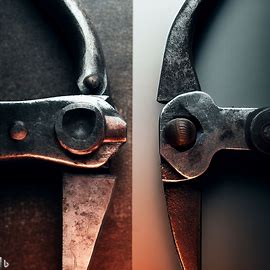
When it comes to efficiency and precision, both types of pruning tools have their advantages.
Anvil pruners excel at delivering powerful cuts through thicker branches due to their strong cutting mechanism.
They are highly efficient in tackling tough woody stems that would pose a challenge for other pruning tools.
However, because they squeeze rather than cleanly snip through plant material, there is a higher chance of crushing or tearing during use.
Bypass pruners offer excellent precision when it comes to making cleaner cuts on smaller branches or live growth.
Their scissor-like action ensures minimal damage to surrounding tissue, reducing the risk of infection or disease transmission.
Notwithstanding, bypass pruners may struggle when faced with larger branches as they lack the sheer force provided by anvil shears.
Ultimately, your choice should depend on your gardening needs and preferences—whether you prioritize power over precision or vice versa.
Maintenance Requirements for Both Types of Pruners
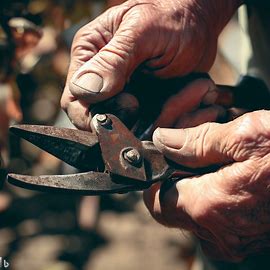
To maintain optimal functionality and longevity for both types of pruning tools – anvil and bypass pruners – regular maintenance is essential.
For Anvil Pruners:
- Keep the blade sharp by periodically sharpening it with a sharpening stone or file.
- Clean the blades after each use to remove sap and debris, as this can cause rust and hinder performance.
- Apply lubricating oil or silicone spray to prevent rust and keep the tool functioning smoothly.
For Bypass Pruners:
- Keep the cutting edges clean by wiping them with a cloth soaked in rubbing alcohol or hydrogen peroxide.
- Sharpen the blades regularly to maintain their sharpness for precise cuts.
- Lubricate any moving parts using specific pruning tool lubrication products recommended by manufacturers.
Effects on Plant Health: Comparing the Trauma Inflicted by Each Type of Shear
The type of shear used for pruning can have lasting effects on plant health. Understanding how anvil and bypass pruners affect plants differently can help you make informed decisions to promote the well-being of your garden.
Anvil pruners, due to their cutting mechanism, can potentially cause more trauma to plants. The squeezing action between the blade and the anvil can crush plant tissue, leading to larger wounds.
These larger wounds take longer to heal and may provide entry points for pathogens, increasing the risk of infection or disease.
While anvil pruners are excellent for cutting deadwood or thicker branches, it’s essential to exercise caution when using them on live growth. Proper technique, such as cutting at a slight angle and avoiding excessive force, can help minimize damage and promote faster healing.
Bypass pruners, with their scissor-like cutting action, inflict less trauma on plants. The clean, precise cuts they create minimize the risk of crushing or tearing plant tissue. This not only promotes faster healing but also reduces the chances of disease transmission.
Bypass pruners are particularly well-suited for tasks that involve live growth, such as trimming flowers, shrubs, or young branches. Their ability to make accurate cuts without causing unnecessary harm makes them an ideal choice for maintaining plant health and appearance.
Recommendations for Choosing the Right Pruner for Your Gardening Needs
The choice between anvil and bypass pruners ultimately depends on the specific tasks you’ll be tackling in your garden.
Use anvil pruners when:
- Dealing with deadwood or thicker branches that require more cutting force.
- Conducting heavy pruning tasks, such as shaping or reducing overgrown shrubs.
- Working on tasks where a slightly larger wound is acceptable, such as cutting back older branches.
Use bypass pruners when:
- Pruning live growth or delicate plant material where precision is crucial.
- Trimming flowers, young branches, or foliage without causing unnecessary damage.
- Prioritizing plant health and aiming for faster healing and reduced risk of infection.
In some cases, having both types of pruners in your gardening toolkit can provide the versatility needed to address a wide range of tasks effectively.
Conclusion
Remember that regardless of the type of pruner you choose, proper pruning techniques are essential for maintaining plant health and achieving desirable results.
Always sanitize your pruning tools before and after use to prevent the spread of diseases, and ensure that your cuts are clean and precise to minimize stress on your plants.
So, the next time you’re faced with the anvil pruner vs. bypass pruner dilemma, consider your gardening goals, the types of plants you’ll be working with, and the specific tasks you’ll be performing.
Armed with this knowledge, you’ll be better equipped to choose the right pruner to help you create and maintain a flourishing and beautifully manicured garden.

